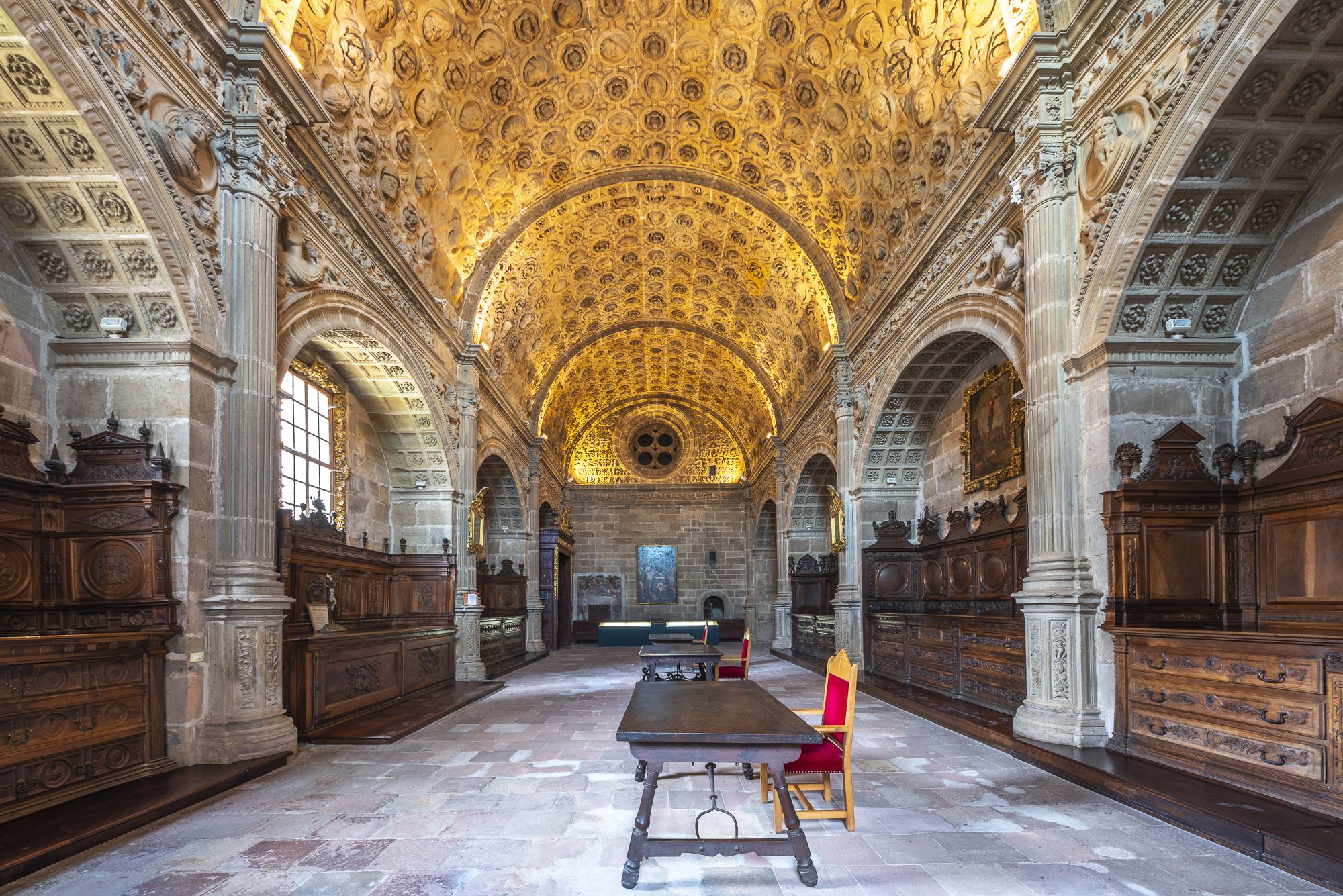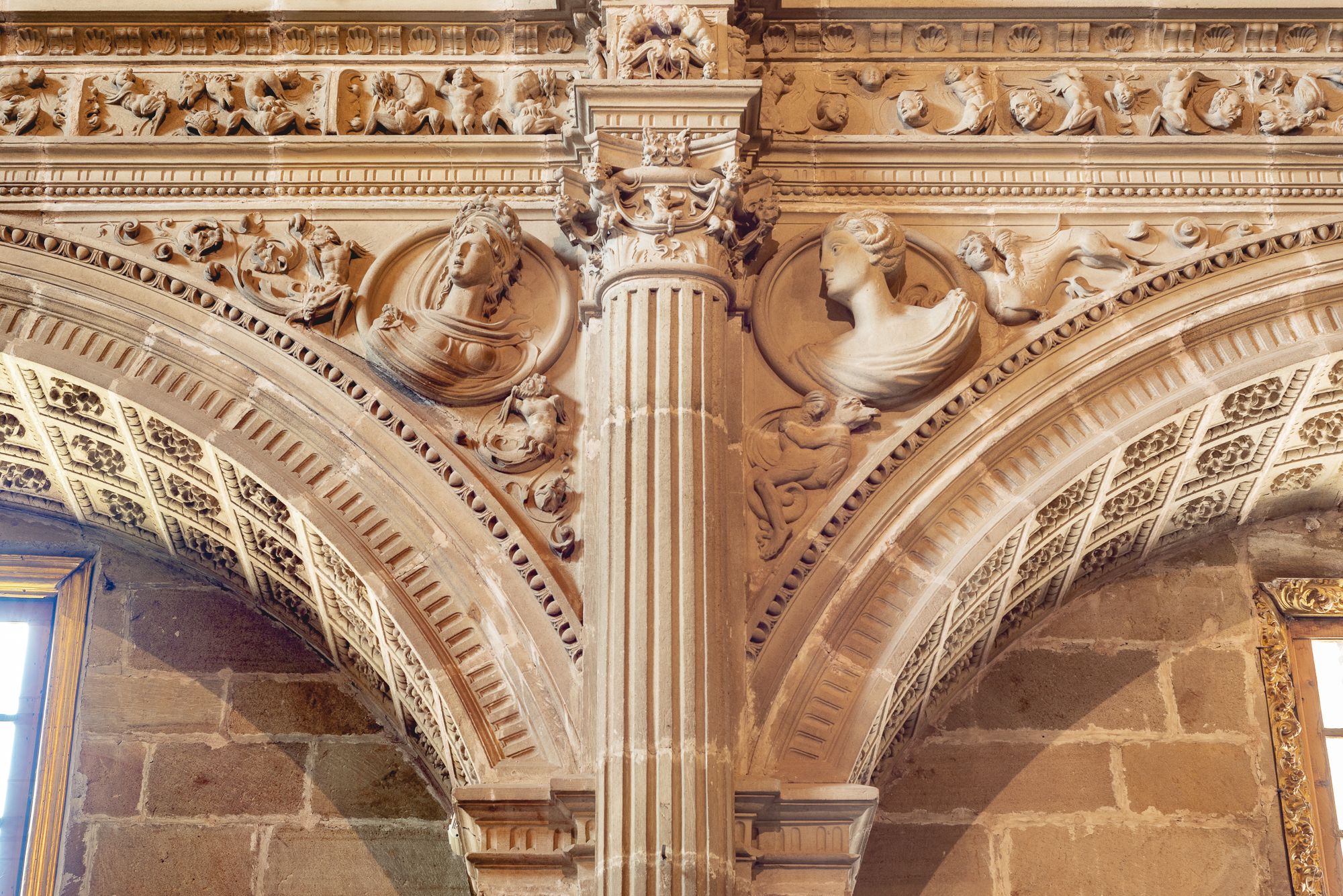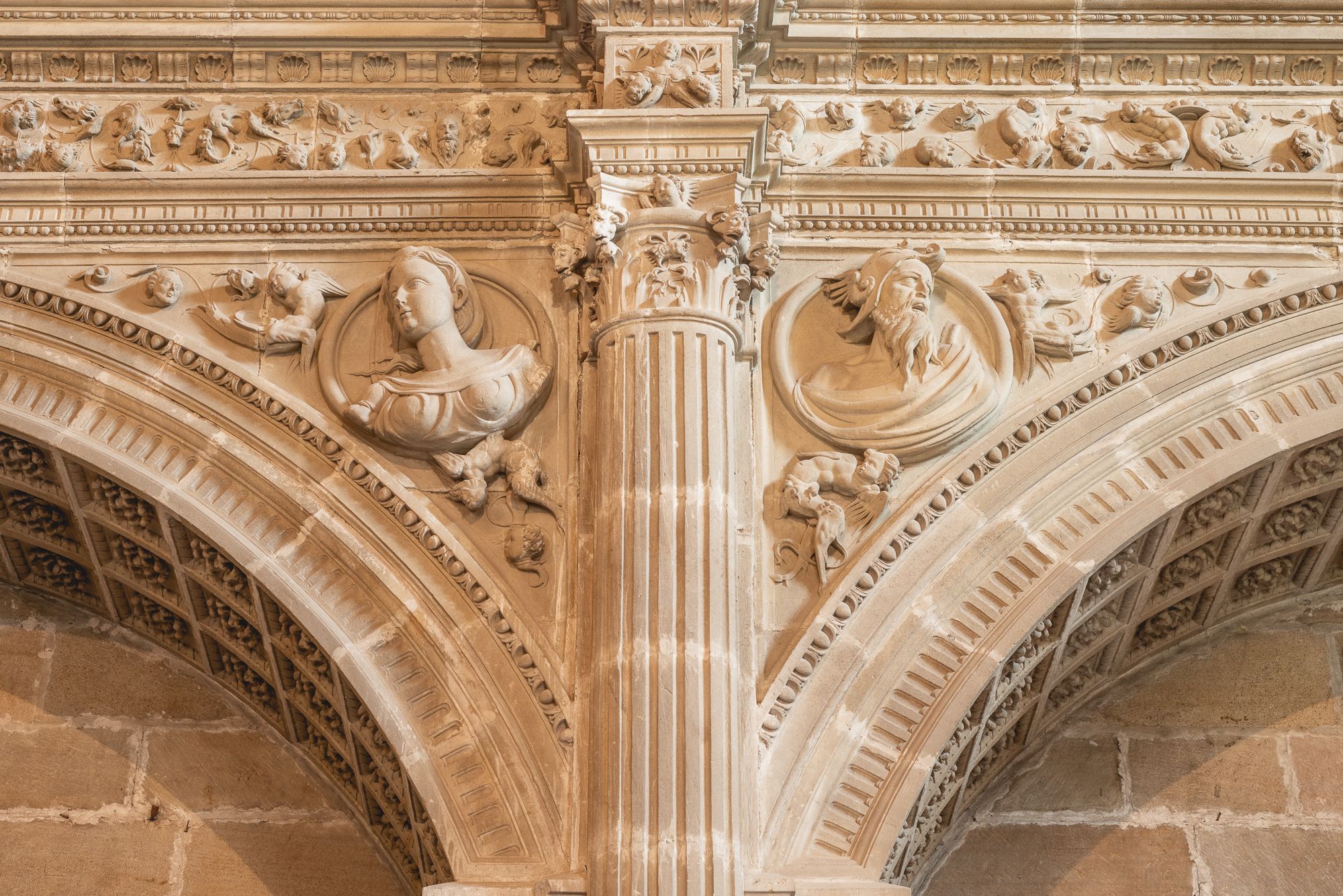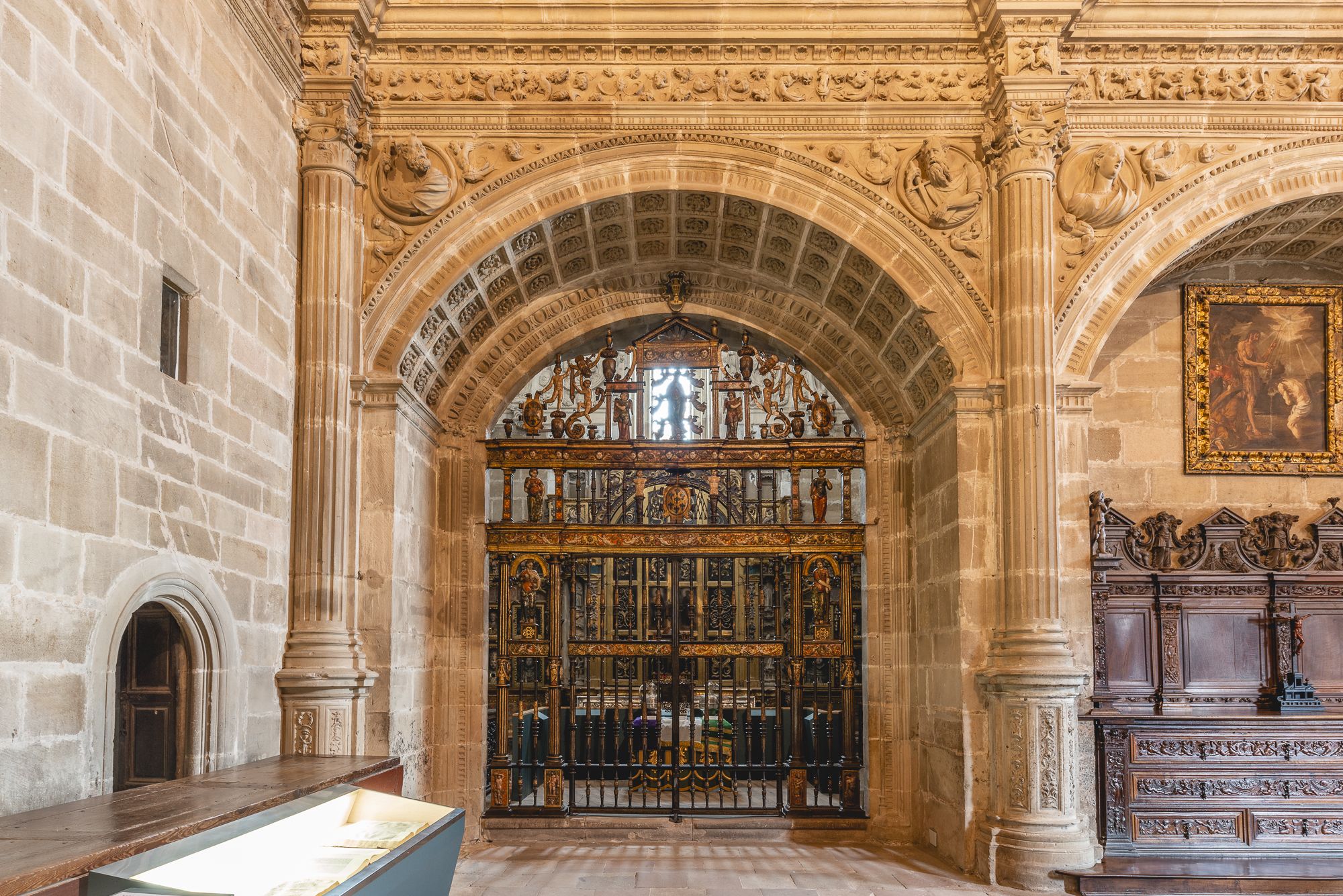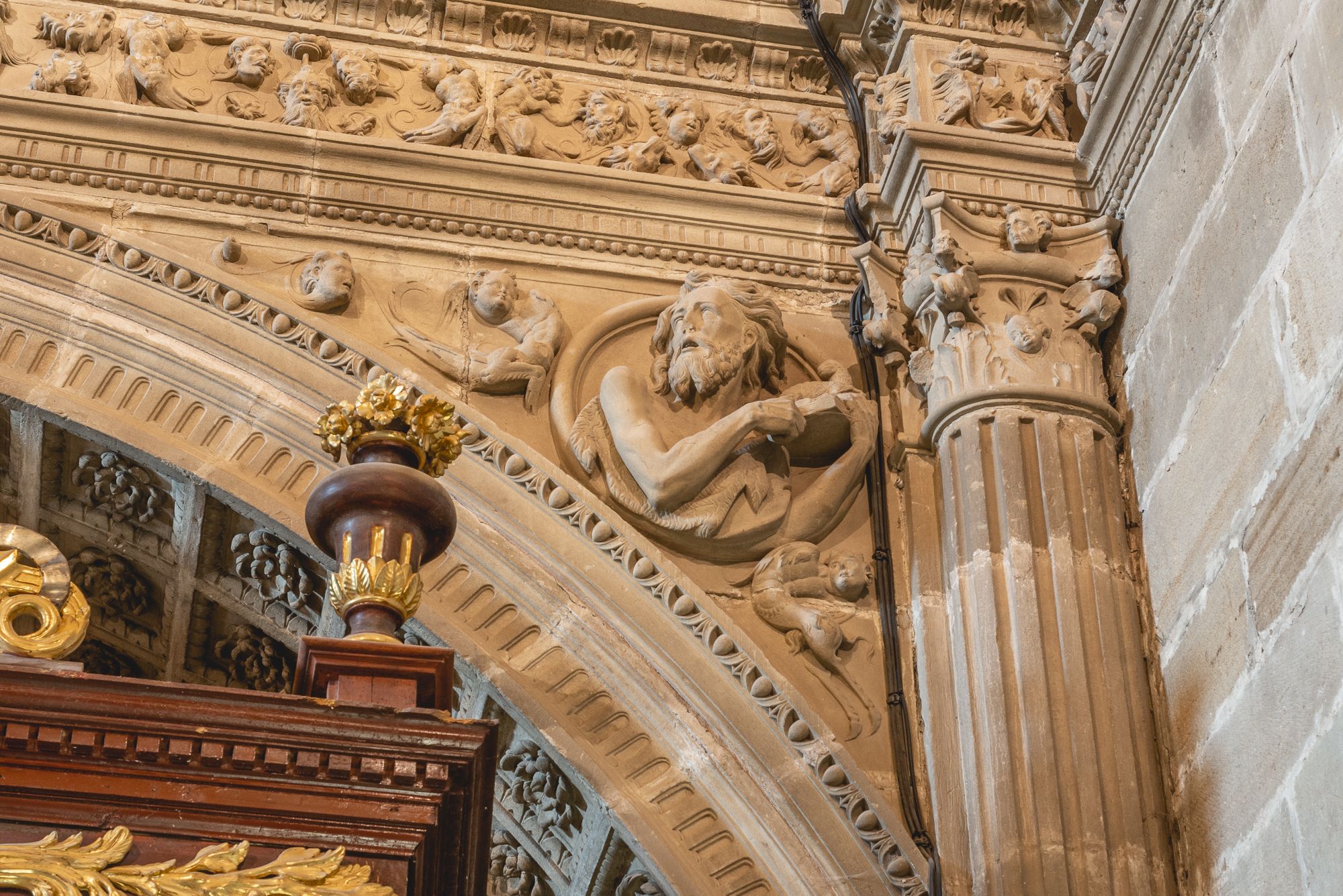<
ne of the most important examples of Spanish Renaissance art, this sacristy was designed by Alonso de Covarrubias, and was executed by various maestros including: Francisco de Baeza, who documented his work as supervisor; Nicolás de Durango (1535); the Sigüenza maestro Martín de Vandoma (1554), etc.
It has a sumptuous Renaissance facade, built in 1573, with the work of the sculptors Juan and Pedro de Buega (1592-1593) under the direction of Juan Sanz or Sánchez del Pozo (1571-1572), with fixed columns on high pedestals, and which is completed with various niches containing sculptures of apostles. The door jambs, made of walnut with Plateresque engravings of various saints, are magnificent. They were made under the supervision of the Sigüenza maestro Martín de Vandoma.
The interior is composed of one chamber divided into four rectangular sections. The dome is inset and the ceiling is wonderfully decorated. It is covered by hundreds of caissons with 304 large and expressive heads and more than 3,000 smaller ones, in the form of faces on medallions, roses and angels. A series of spandrels in the lateral arches, of the friezes, etc., make up a whole which is ichnographically and ornamentally unique in Spain.
The drawer sets are made from walnut with Plateresque engravings, the work of the Sigüenza maestro Martín de Vandoma.
The Chaple of El Espíritu Santo
This chapel connects with the Sacristy of Las Cabezas by means of a highly ornamented facade, with a semicircular arch and an extremely beautiful wrought iron grille, which is the work of Hernando de Arenas (1561). However, he only carried out the work according to the plans designed by the famous Xaimete or Xamete, who lived in Cuenca and made designs to order for altars and monuments. This was probably not the only design that Xaimete made for Arenas, as there is a great similarity between this grille and the one found in the Chapel of the Assumption in Cuenca Cathedral, for which reason it must date from approximately the same period.
This Chapel of Relics and the Holy Spirit from the 16th century is square in shape with interesting and complex Plateresque designs on the walls which are finished off by a beautiful semicircular cupola on pendentives. AII of this is richly embellished with telamons, caryatids and carvings and reliquaries of saints, apostles, evangelists, prophets, wise men and haut relieves, etc. This piece is the work of the Sigüenza maestro Martín de Vandoma, with whom master Pierres (1524-1566) worked to produce the allegories of Science, Piety, Charity and Strength, emphasizing the magnificent sculptures which decorate and enhance the monumental achievement of this chapel, which is a supremely characteristic example of Mannerist art.
The item most worthy of admiration is the painting by Doménicos Theotocopulos, better known as «El Greco». His inspiration was more divine than human. One’s eyes do not tire of contemplating his rich, personal use of color, which is full of light. The strength of the archangel’s wings, the delicate rhythm of his body, moved only through his spirit, without any muscular force at all; the verticality which the whole of his yearning figure supported by sculptural clouds suggests; the soft expressive intensity of the mystic discourse accompanied by an exquisitely peaceful and deprecatory gesticulation; the accentuated lengthening of faces, hands and tapering fingers through which, as has been said, the soul seems ready to escape; the beautiful, vast, breaking open of the sky, with the apparition, in golden splendor, of the Holy Spirit accompanied by cherubs. One will deduce that this Cretan Assumption of Sigüenza Cathedral is one of the most exquisite and Spiritual versions of the Mystery. It dates from the artist´s later period, at the start of the 17th century.
